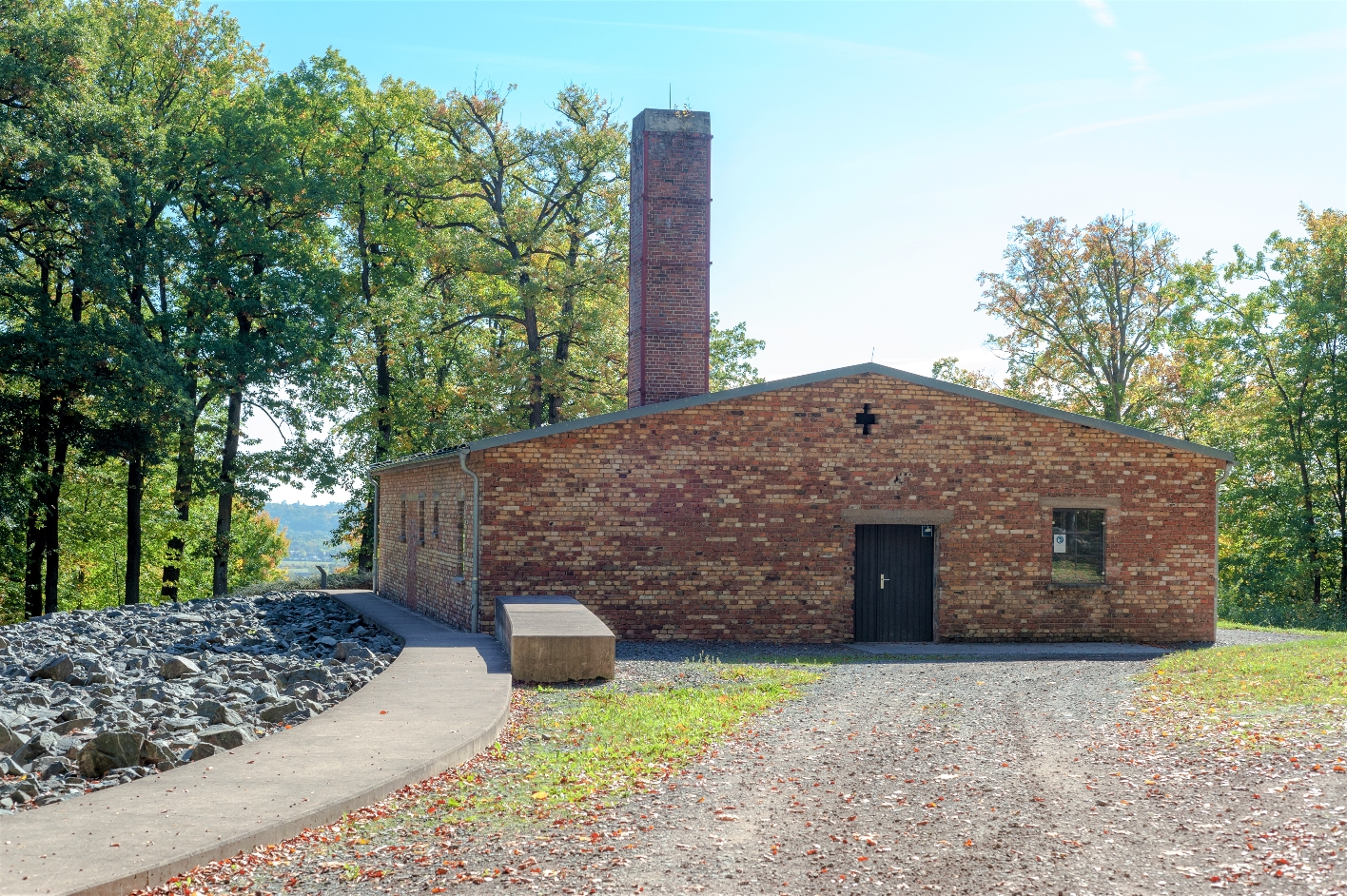

©GARF, Moskau

During the first few months of the camp, when there were not yet any
Due to its significance as a cemetery, the crematorium building was not torn down with the rest of the camp in the 1950s. From 1966 to the early 1990s, it housed a permanent exhibition on the history of the camp. Interior walls had been torn down and the paintings on the walls made by inmates had been painted over with white paint. A bronze relief by artist Theo Balden was installed in the incinerator room in 1979. From a broad base of emaciated bodies arises a flame, which culminates in a flower bud. After 1990, the crematorium was restored, and it now exclusively serves as a commemorative site for the dead.

